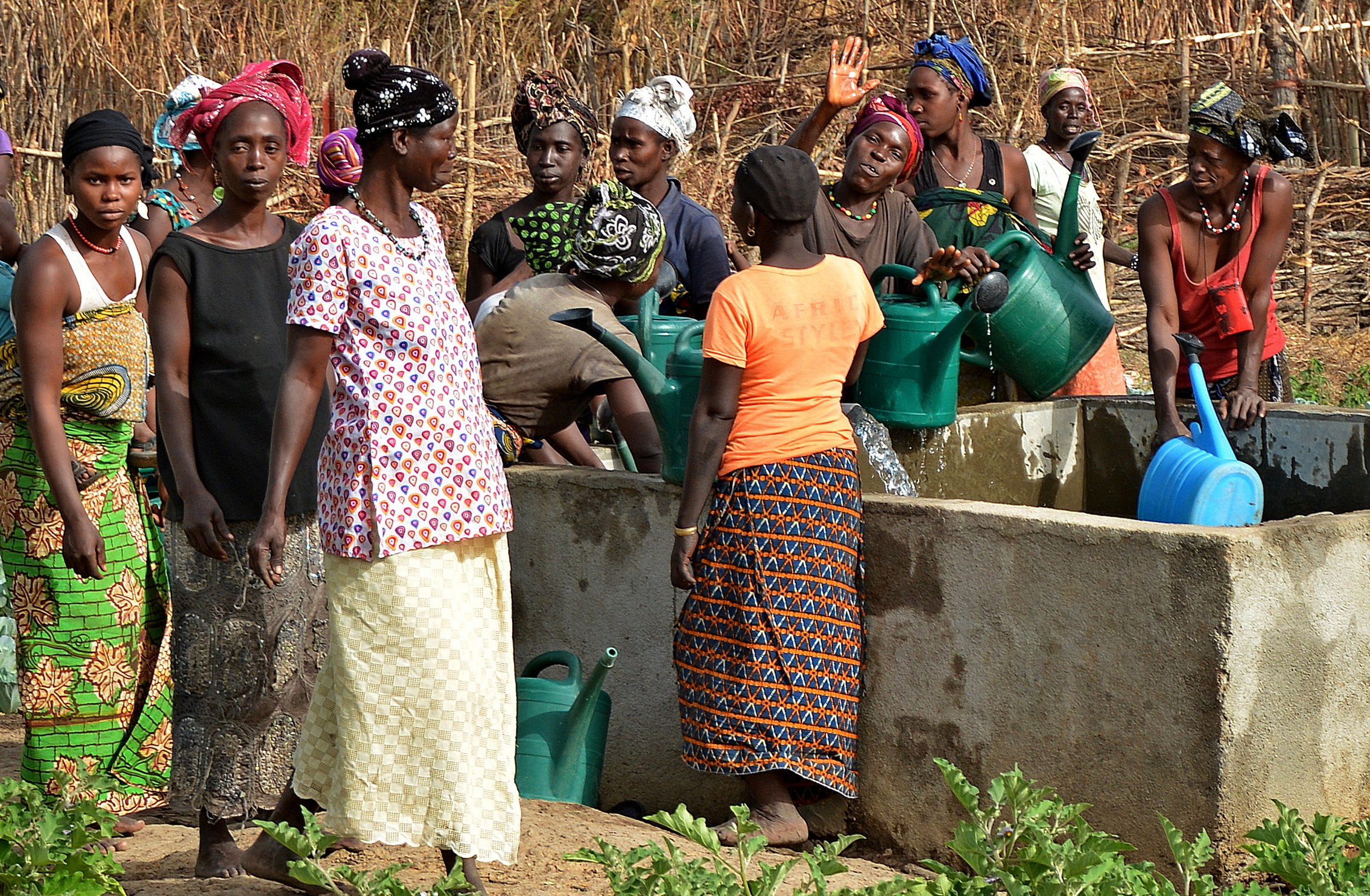As climate change makes rainfed agriculture an increasingly precarious venture, small-scale irrigation technology is key to ensuring smallholder farmers can adapt and manage risk. However, despite the gradual uptake of small-scale irrigation technologies, women farmers are at risk of being left behind.
Overall, women are less likely to practice irrigation than men. The few women who do irrigate are more likely to use highly labor-intensive manual methods of lifting and applying water, such as buckets and watering cans, while men are more likely to use more expensive, labor-saving mechanized technologies such as solar or diesel pumps.
This reflects the reality that women do not have the same opportunities as men to adopt and benefit from irrigation technology. A new IFPRI project note for REACH outlines some ways to assess and address this imbalance.
Why do women need irrigation technologies?
Women make up about 43 percent of the on-farm labor force in developing countries. They need irrigation for the same reasons men do—and then some.
Specifically, irrigation technology can support women farmers in the following ways:
- Generate income through higher value produce, higher yields, and an extended growing season.
- Grow more nutritious crops.
- Withstand weather variability and climate stresses.
- Access water supply for multiple purposes in addition to crops (drinking, cleaning, livestock, etc).
- Improve family health and reduce women’s burden of caring for the sick.
- Reduce women’s own time and energy burden of collecting and/or applying water.
Why is there a gender gap in irrigation technology adoption?
Men and women both face barriers to adopting irrigation and other agricultural technologies, but women face more barriers and different kinds of barriers. A common mistake is to only think about the act of buying or acquiring technology. In fact, acquisition is only one element within a wider uptake process that includes four key stages: Technology development, dissemination, adoption, and use. Each stage presents opportunities to include women and overcome constraints.
We can investigate the following gender and social inclusion issues at each phase:
- Design. Irrigation technology is rarely designed with or for women. This matters because women often prefer different irrigation technologies than men and will not adopt technology that does not meet their needs. Making irrigation work for women means understanding where, when, for what purposes, and at what scale women clients want to use irrigation and water technologies in the given context. Issues like the location or portability of the technology, suitability for multiple uses (drinking water, irrigation, livestock watering), labor requirements, social acceptability of use, and upfront and operational costs often matter to women.
- Dissemination. Even if the technology meets women’s needs, women won’t adopt it if they don’t know about it. Disseminating information about new technology requires specific strategies to reach women. Traditional channels, such as farmer field days and trainings or working through extension agents, producer groups, or equipment dealers, may leave women out. Rather, we need to meet women where they are and provide information through networks that women trust, such as women community leaders, savings groups, frontline health workers, or women lead farmers and producer groups
- Adoption. Once women learn about a technology, in most cases, they need to find a way to purchase it. Access to credit remains a challenge for women. In addition, irrigators need access to irrigable land, water, labor, and markets to buy inputs and sell irrigated produce. Women are disadvantaged in each of these areas. Furthermore, within the household, a woman often needs her husband’s consent to purchase technology.
- Use. Finally, after irrigation technology is adopted, men and women, even within the same household, may experience different impacts, such as workload, power to decide on whose plots of land the technology is used, and control over the income generated. There are also risks to women who irrigate. More powerful actors in the family or outside can appropriate land after they make investments in irrigation, so efforts are needed to secure women’s land and water tenure to ensure benefits after the technology is adopted.
Taking action
Irrigation policy makers, project managers, engineers, designers, extension agents, and equipment dealers each have a role to play in making small-scale irrigation work for women. The process of technology adoption requires coordination between actors to ensure the design of the technology meets women’s needs, that information about the technology reaches women, that women are able to adopt the technology, and that women are able to benefit securely from the technology.
To close the gender gap at each phase, the IFPRI-REACH project note—“Considering gender when promoting small-scale irrigation technologies: Guidance for inclusive irrigation interventions”—details further opportunities for measuring gender differences in irrigation technology adoption and taking action. This project note assists policy makers and practitioners in designing inclusive irrigation projects and monitoring and evaluating their impact on men and women. Ultimately, there is no one factor that is solely responsible for women’s exclusion from technology adoption, and assessing women’s needs in design, dissemination, adoption, and use of technology is the foundation for developing a holistic strategy to make irrigation work for women.
Here are some key questions from the toolkit for policy makers and project managers to consider while evaluating the impact of irrigation projects on women:
IFPRI
Sophie Theis is a Senior Research Analyst with IFPRI’s Environment and Production Technology Division. This post first appeared on the REACH blog.







